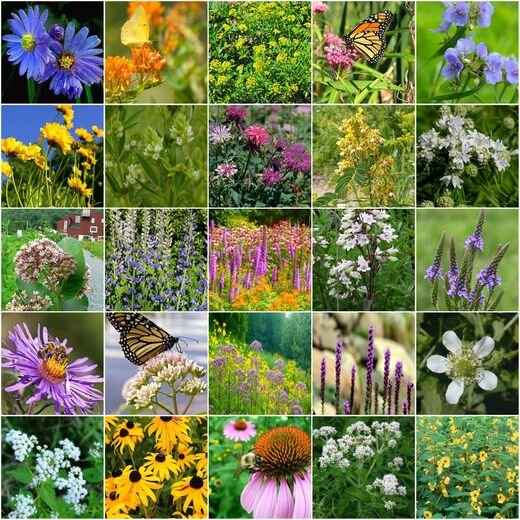Planting for Pollinators
“The hum of bees is the voice of the garden” –Elizabeth Lawrence
It’s officially midsummer and by now your garden is likely bursting with new life. As a proud homeowner, you might spend several hours a week hauling watering cans, fertilizer and trellises back and forth. But are you taking care of your garden helpers? Pollinators – the overlooked support crew behind every great garden – are essential in ensuring an abundant harvest of flowers and vegetables. By rolling out the welcome mat to our winged friends, you’re not only helping your own garden but the entire food chain.
Honeybees may be the first that come to mind, but there are many more native pollinators to consider. Cultivating a pollinator-friendly garden will support native bees like mason, squash and digger bees; butterflies and moths; beneficial flies; hummingbirds, and even bats! These critters will help to sustain a diverse, balanced and abundant ecosystem in your backyard.
Pollinator-Friendly Plants (New England)
There are thousands of plants to consider when incorporating pollinator-friendly practices into your garden. By choosing locally sourced, non-invasive plants, particularly perennials, you are tailoring your yard to suit the wildlife and climate of your region, and potentially creating a space that is more low maintenance over the long term. Meanwhile, annuals are a great supplement that add an immediate pop of color (and pollen) to your outdoor space.
Tips & Glossary
Cultivars: a plant variety that has been produced in cultivation by horticulturists for selective breeding (does not generally produce true-to-seed)
Variety: a variety is a group of plants within a species that has one or more distinguishing characteristics and usually produces true-to-seed
Pollinators have a difficult time obtaining food from excessively hybridized flowers, so include cross-pollinated or heirloom options
Seek out single-flowering variety (such as rugosa rose), which have often co-evolved alongside pollinators, versus highly cultivated double/triple head flowers (such as an ornamental rose), as these generally produce less pollen and are harder for the insect to access
June/Midsummer Pollinators (not comprehensive):
Verbena hastata (Blue Vervain)
Aquilegia species (Columbine)
Dianthus species
Digitalis purpurea (foxgloves)
Fuschia
Eutrochium Eupatorium maculatum (Joe Pye Weed) *Great for Monarch Butterflies!
Monarda species (Bee Balm and Bergamot)
Lobelia cardinalis (Cardinal flower)
Petunia
Rudbeckia (Black-eyed Susan)
Echinacea (coneflower)
Symphyotrichum (aster/daisy family)
Salvia
Baptisia australis (blue false indigo)
Cosmos
Achillea (Yarrow)
Coreopsis (tickseed)
Zinnia
Nasturtium
Rose species
Extend Nectar Season
Your local pollinators are true workaholics, so they benefit from a multi-season buffet. To achieve this, you can think about planning your garden to include a variety of early, mid and late season blooms. Not only will this increase biodiversity, it also means an ever-changing garden palette. You can easily find bloom season information on the back of the seed packet or nursery tag.
Chemical-Free Zones
The well-publicized decline of the honeybee reflects the wider crisis facing the insect world – loss of habitat and widespread pesticide use have decimated populations. On a personal scale, you can mitigate this damage by opting to avoid the use of synthetic chemical pesticides all together or choosing a safe, natural alternative.
At Distinctive Gardening we are concerned by the risks posed to humans and wildlife by widespread chemical pesticide use. That is why we are certified organic specialists and use only organic, natural materials in our work.
Welcome Home
It’s not just about creating a good place to collect nectar – pollinators are intensive workers that need shelter and water to survive. You can create a sanctuary by providing an open water source for drinking, hanging hummingbird feeders, and creating “bee hotels.” Put simply, a bee hotel/house is a structure comprising small, partially sealed spaces for native bees and insects to rest safely.
You can create an all-natural, biodegradable bee house using material widely found in the garden or natural spaces. Look out for our next blog post outlining how to create your own bee house for free!
Coming Soon to the Blog: Make Your Own Biodegradable Beehouse!






